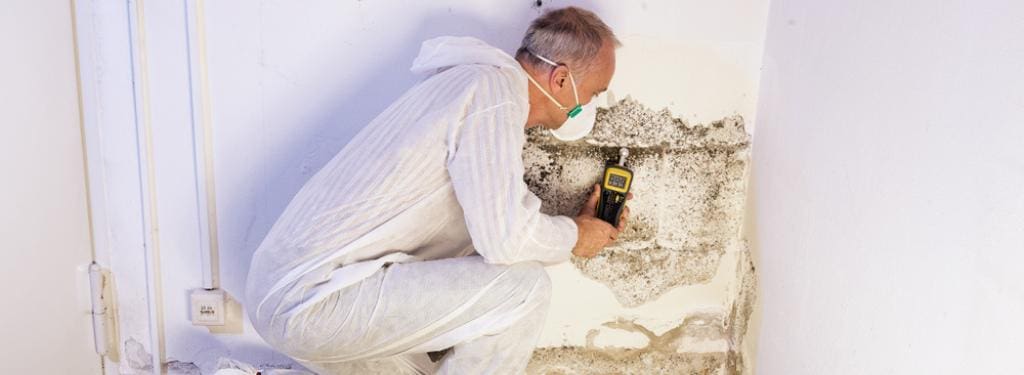Crafting a Thorough Post Mold Remediation Report
Crafting a Thorough Post Mold Remediation Report
Blog Article
Your Ultimate Overview to Message Mold Remediation Strategies
Navigating the realm of post-mold removal strategies is a careful procedure that requires interest to detail and a comprehensive understanding of the intricacies entailed. In the results of mold and mildew invasion, knowing just how to properly get rid of the mold and mildew and avoid its reoccurrence is paramount for preserving a healthy indoor setting. From choosing the right cleansing and decontaminating techniques to implementing approaches for long-lasting mold and mildew prevention, each action in the removal journey plays a crucial duty in making certain a successful outcome. As we get started on this exploration of post-mold removal techniques, we will certainly uncover the crucial approaches and finest practices that can aid you restore your space to its pre-mold condition and secure it versus future mold hazards.
Understanding Post-Mold Remediation Process
After completing the mold remediation process, it is crucial to understand the post-mold removal strategies that are essential to make sure a comprehensive and efficient cleanup. Once the mold has been removed, the next action involves cleaning and sanitizing the influenced areas to stop any type of regrowth of mold. This includes using specialized cleaning up agents to clean down surface areas and kill any remaining mold and mildew spores. It is important to dry the area completely to discourage the development of mold and mildew in the future (Post Mold Remediation). Correct air flow and dehumidification can aid in this procedure.
In addition, conducting a last evaluation post-remediation is vital to guarantee that all mold has actually been successfully eliminated. If the inspection exposes any type of lingering mold and mildew, additional removal might be required.
Effective Cleaning and Disinfecting Techniques

Stopping Future Mold And Mildew Growth

Importance of Appropriate Ventilation
Proper air flow plays an essential duty in stopping dampness accumulation, a key consider mold and mildew development within interior environments. Efficient air flow systems aid eliminate excess humidity from the air, minimizing the opportunities of mold spores finding the moisture they require to germinate and spread out. Without adequate ventilation, interior areas can end up being a reproduction ground for mold, resulting in possible wellness risks and architectural damage.
By making certain correct air blood circulation, After mold remediation ventilation systems can likewise aid in drying moist locations faster after water damages or flooding occurrences, further discouraging mold growth. Post Remediation verification. Precede like washrooms, kitchen areas, attic rooms, and cellars where dampness degrees have a tendency to be higher, setting up and preserving reliable ventilation systems is crucial in avoiding mold invasions

Surveillance and Maintenance Tips
Provided the critical function that proper ventilation plays in avoiding mold development, it is important to establish effective surveillance and maintenance tips to make certain the ongoing functionality of air flow systems. Routine inspections of air flow systems need to be carried out to check for any kind of indications of blockages, leakages, or malfunctions that might impede correct air flow. Surveillance humidity degrees within the property is likewise essential, as high moisture can contribute to mold and mildew development. Setting up a hygrometer can aid track humidity degrees and alert house owners to any spikes that might need attention. Furthermore, guaranteeing that air filters are routinely cleaned up or changed is vital for keeping the efficiency of the air flow system. Carrying out a timetable for routine upkeep tasks, such as duct cleansing and cooling and heating system inspections, can help prevent issues prior to they escalate. By remaining attentive and positive to the problem of ventilation systems, homeowner can successfully alleviate the danger of mold and mildew regrowth and maintain a healthy indoor environment.
Final Thought
In conclusion, post-mold remediation techniques are crucial for making certain a clean and secure atmosphere. Understanding the process, implementing efficient cleansing and disinfecting approaches, protecting against future mold development, maintaining proper air flow, and regular tracking are all vital action in the remediation procedure. By complying with these standards, you can successfully get rid of mold and mildew and avoid its return, promoting a healthy living or working room for all owners.
In the results of mold infestation, knowing exactly how to successfully eradicate the mold and mildew and stop its reoccurrence is critical for keeping a healthy indoor atmosphere. Once the mold has been gotten rid of, the next action entails cleaning and decontaminating the influenced locations to avoid any kind of regrowth of mold and mildew - Post Remediation verification. After removing noticeable mold and mildew growth, it is important to clean all surface areas in the afflicted area to get rid of any type of continuing to be mold and mildew spores. To additionally boost mold and mildew prevention actions, it is crucial to deal with underlying problems that at first led to mold growth.Provided the essential duty that appropriate ventilation plays in protecting against mold and mildew growth, it is essential to develop reliable tracking and upkeep ideas to guarantee the continued functionality of air flow systems
Report this page